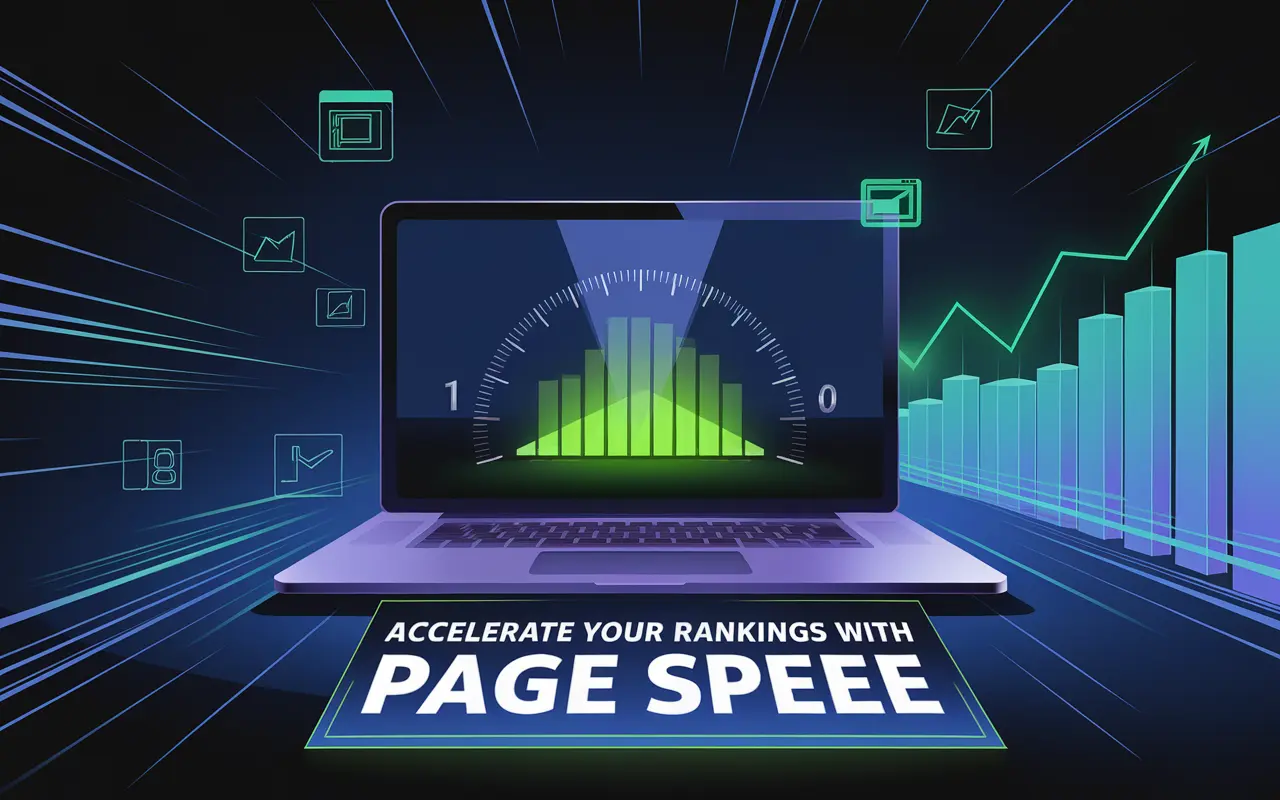What is Page Speed
Page Speed refers to the amount of time it takes for a specific web page to load completely in a user’s browser. In the world of SEO services, it plays a vital role, impacting everything from user experience to website ranking in search engine results. Fast-loading pages not only satisfy users but are also favored by Google’s search algorithm, especially on mobile.
Understanding and optimizing Page Speed is crucial for digital success. From reducing bounce rates to increasing conversions, a faster site uplifts every layer of SEO strategy and supports broader business goals like revenue growth and competitive advantage online.
Definition
Page Speed is the measurement of how quickly the content on a web page loads. It’s typically evaluated using metrics such as Time to First Byte (TTFB), First Contentful Paint (FCP), and Largest Contentful Paint (LCP). These performance indicators gauge the initial responsiveness and the time it takes for users to see meaningful content.
Unlike overall site speed, which looks at the average load time across multiple pages, Page Speed assesses load time on an individual page level, helping isolate performance issues page-by-page.
Key Takeaway
Page Speed is one of the most critical SEO factors, directly affecting rankings, user engagement, bounce rates, and overall site performance—especially for mobile users.
Importance for SEO
Fast Page Speed is essential to a successful SEO strategy. Search engines like Google use speed as a ranking factor in their algorithm, meaning that slow-loading pages are likely to rank lower. Furthermore, poor loading times increase bounce rates and decrease user engagement, which negatively impacts SEO KPIs like dwell time and pages per session.
Improving Page Speed can directly boost your SEO efforts, bringing in more organic traffic and potentially increasing website revenue. It enhances the user experience, fosters trust, and ultimately helps businesses grow in both visibility and profitability.
Best Practices
- Compress Images: Use tools like TinyPNG or WebP formats to reduce image sizes without compromising quality.
- Enable Browser Caching: Store static files in the user’s browser for faster repeat visits.
- Minify Code: Remove unnecessary characters, lines, and spaces in HTML, CSS, and JavaScript to reduce file sizes.
- Use a Content Delivery Network (CDN): Distribute content geographically to reduce latency and load times for global visitors.
- Reduce Server Response Time: Optimize server configurations and upgrade hosting solutions if necessary to speed up response.
- Avoid Render-Blocking Scripts: Defer non-critical JavaScript and CSS so they load after above-the-fold content is visible.
- Use Lazy Loading: Load images and videos as the user scrolls, keeping initial load light and fast.
How Page Speed Works
Page Speed works by evaluating and optimizing how long it takes for a browser to load all the resources of a web page. Here’s a breakdown of how it works technically and practically:
Initial Request (TTFB)
TTFB, or Time to First Byte, measures the delay between the request for a page and the delivery of the first byte of response. Fast server response time boosts initial loading metrics.
Content Rendering (FCP & LCP)
FCP marks the time when the first piece of content is rendered, and LCP indicates when the largest content element is fully visible. These are key indicators of perceived load speed by users.
Full Interactivity (TTI)
Time to Interactive (TTI) measures when a page becomes fully interactive. This step ensures no blocking scripts delay user actions like clicking.
| Metric | Ideal Range | Impact on SEO |
|---|---|---|
| TTFB | < 200ms | Faster first byte improves crawling & responsiveness |
| FCP | < 1s | Enhances perceived speed and UX |
| LCP | < 2.5s | Key performance indicator for Core Web Vitals |
| TTI | < 3.8s | Critical for usability and functionality |
Case Study: How Improving Page Speed Increased Organic Traffic by 40%
Problem: High Bounce Rate on E-Commerce Product Pages
A leading fashion retailer was experiencing a 65% bounce rate, and their product pages took over 5 seconds to load on mobile devices. Conversions and organic traffic were steadily declining.
Solution: Technical Optimization for Better Page Speed
We implemented image compression, lazy loading, browser caching, and served assets through a CDN. We also minified code and removed unnecessary third-party scripts.
Results: 40% Increase in Organic Traffic & 30% More Conversions
The average load time was reduced to 1.8 seconds. Bounce rate dropped to 40%, and organic traffic increased by 40%. Conversions improved by 30% within three months of implementation.
Common Mistakes to Avoid
- Oversized Images: Using large or uncompressed images drastically slows down page loading.
- Render-Blocking JavaScript: Scripts that load before the main content delay page visibility significantly.
- Excessive HTTP Requests: Too many files requested from the server can lengthen load times.
- Unoptimized Fonts: Web fonts not properly compressed or hosted can block rendering.
- No Lazy Loading: Loading all elements upfront wastes resources and time.
Related Terms
Related terms:
- Technical SEO: The foundation of site performance, including Page Speed, crawlability, and mobile optimization.
- Core Web Vitals: Google’s performance metrics that directly incorporate Page Speed indicators like LCP and FID.
- Site Architecture: Page Speed is influenced by how well your site’s structure allows fast content delivery.
Conclusion
Page Speed is more than just a technical metric—it’s a business performance factor. A faster site leads to better search rankings, higher user satisfaction, and increased conversions. Whether you’re running an e-commerce store or a service-based website, optimizing your page speed should be a vital component of your SEO strategy. For more impactful optimization strategies, browse our SEO resources and insights on DigiDream SEO.






